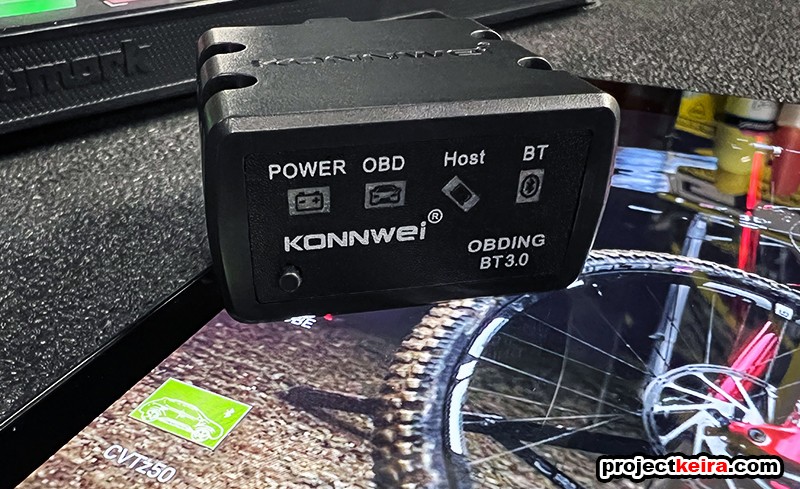Are you experiencing annoying vibrations in your car at idle? It could be a common issue easily resolved with an Obd2 Idle Adjustment. This guide will walk you through the process, using a real-world example of a Nissan Frontier owner who successfully eliminated idle vibration using a Konnwei KW902 (ELM327) Bluetooth OBD-2 interface and the CVTz50 app.
Understanding the Problem: Idle Vibration
Idle vibration often occurs when the engine isn’t running smoothly at low RPMs. Symptoms can include noticeable shaking or noise, particularly when the car is in park or at a stoplight. In the case of the Nissan Frontier owner, the vibration occurred under specific conditions:
- At idle, shifter in “Park,” after the engine warmed up.
- Shifter in “Drive,” vehicle stationary, foot on the brake.
The Solution: OBD2 Idle Adjustment with CVTz50
After extensive research, the Frontier owner discovered that increasing the idle RPM could resolve the vibration issue. This can be achieved without expensive dealership visits or aftermarket ECU tuners, thanks to OBD2 technology.
The process involves using an OBD2 Bluetooth adapter, like the Konnwei KW902, paired with an Android device running the CVTz50 app. This app allows for precise adjustments to the vehicle’s idle RPM.
Step-by-Step Guide to OBD2 Idle Adjustment
-
Install the CVTz50 app: Download and install the CVTz50 app from the Google Play Store onto your Android device.
-
Connect the OBD2 adapter: Plug the Konnwei KW902 into your vehicle’s OBD2 port, typically located under the dashboard.
-
Pair the devices: Connect the adapter to your Android device via Bluetooth, then complete the pairing process within the CVTz50 app.
-
Navigate to Idle RPM Adjustment: Within the CVTz50 app, locate the “IDLE RPM ADJ / NISSAN” function.
-
Incrementally Increase Idle RPM: Gradually increase the idle RPM in small increments (+25 RPM at a time) using the app.
-
Test Drive and Observe: After each adjustment, test drive the vehicle under the conditions where the vibration previously occurred. Note any changes.
-
Find the Optimal Setting: Continue adjusting until the vibration is eliminated. In the Frontier example, +125 RPM proved to be the sweet spot.
Results and Considerations
The Frontier owner observed a minimal impact on fuel economy (less than 2 miles of range per tank) after the adjustment. This minor trade-off was deemed acceptable considering the elimination of the bothersome vibration.
Important Note: This process may vary slightly depending on your vehicle and the specific OBD2 adapter and app used. Always consult your vehicle’s manual and exercise caution when making adjustments to your vehicle’s systems. This guide is for informational purposes only and should not be considered professional advice.
Conclusion
OBD2 idle adjustment can be a simple and effective solution for eliminating idle vibration. By using the right tools and following a careful process, you can improve your vehicle’s comfort and performance. While the CVTz50 app worked perfectly for the Nissan Frontier in this case, other OBD2 scanning software may offer similar functionality for various vehicle makes and models. Explore your options and find the solution that best fits your needs.

